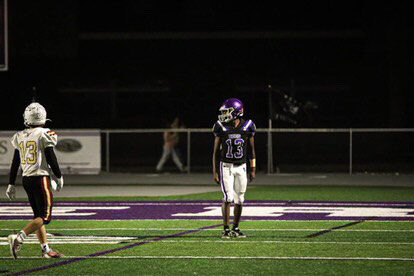Malik Crozier, a 17-year-old football player from Brigham City, Utah, is a member of two teams.
One is the football team at Box Elder High School, where Crozier is a wide receiver. Another is NIL Club, a national online service that unites sports boosters and high school athletes around the United States. Last year, Crozier said, he received payments from NIL Club of approximately $100.
Crozier said he and about thirty teammates have joined NIL Club. He refers to the company as “a fundraiser that your child gets to keep.”
“This has definitely helped me with gas and extra school stuff,” he said.
In high school sports, getting paid isn’t prohibited for all athletes anymore. In 41 states and Washington, DC, athletic associations permit high school players to be compensated for use of their Name, Image and Likeness (NIL). They can profit from pitching products on social media, posing for selfies at a supermarket grand opening and a lot more.
In contrast, most high school associations ban collectives. Collectives pay athletes as NIL deals do but are different in that the money received comes from boosters and family members, among others.
“ This has definitely helped me with gas and extra school stuff.”
According to the Maryland Public Secondary Schools Athletic Association’s handbook, collectives are “groups of alumni, boosters, parents or other people that form a corporation, non-profit organization or other entity to facilitate NIL earnings for student-athletes at a specific school.”
States including Maryland, Pennsylvania, Tennessee, Georgia and Florida have adopted rules to keep collectives out of high school sports. Officials voice concern that wealthy schools will form well-funded clubs and will dominate over teams with less money.
“Collectives promote recruiting. We don’t want to see that within our schools. We don’t want to jeopardize the competitive nature of our athletics,” Mark E. Byers, Chief Operating Officer of the Pennsylvania Interscholastic Athletic Association, told Capital News Service.
“Collectives promote recruiting. We don’t want to see that within our schools.”
Andrew Warner, Maryland Public Secondary Schools Athletic Association athletic director, noted that collectives raise concern for high school sports in part because, “They violate the separation between individual NIL and student-athlete attachment to schools.”
In contrast to high school rules banning them, collectives are an accepted part of college sports and can be a decisive factor in recruitment of top athletes. At three Power Four Conference schools — the University of Texas, Ohio State University and Louisiana State University — collectives distributed more than $20 million last year, according to 247sports.com.
NIL Club doesn’t call itself a collective but operates like one in some basic ways, including the fact that it takes in money from donors and distributes it to athletes. On its website, NIL Club notes that it is different from collectives “as these [NIL Club] communities are run by students, not by adults or boosters.”

Crozier said he discovered the platform over the summer when a friend sent him a link. After joining, athletes like Crozier generate income by creating content such as photos and videos and sharing them to the website. NIL Club, created by a technology company called YOKE, charges a monthly fee for access to the player-generated content which is behind a paywall. Part of the subscription fees goes to players like Crozier.
How many high school and college players participate in NIL Club is difficult to determine. The homepage on NIL Club’s website refers to 250,000 “participating students.”
Mick Assaf, co-chief executive officer, said that NIL Club’s goal is to be “a helpful partner to the state associations.”
“We believe the platform can help high school students and state associations better understand NIL as a whole,” Assaf said in an interview with CNS.
NIL Club’s venture into high school sports has been rocky. Last year, Georgia’s High School Association issued a warning to players that if they signed up with NIL Club – and were paid by boosters for online content – they risked losing their sports eligibility, according to the Atlanta Journal Constitution.
In 2024, the Tennessee Secondary School Athletic Association also singled out NIL Club for apparent violations of the state’s NIL policies.
On the NIL Club website, some students used labels that included school names and sports. TSAA noted that led to confusion about whether schools were sanctioning NIL activity, according to a report in The Tennessean. NIL Club also permitted students to upload photos wearing school uniforms with logos and the school name. That violated the state’s high school NIL policy about use of school intellectual property.
At Box Elder High School in Utah, Crozier believes in NIL Club. In fact, he wishes the company would do more to promote the football team’s presence on its website to fans and family members.
“They would probably pledge more because a lot of them played for Box Elder,” he said.


You must be logged in to post a comment.